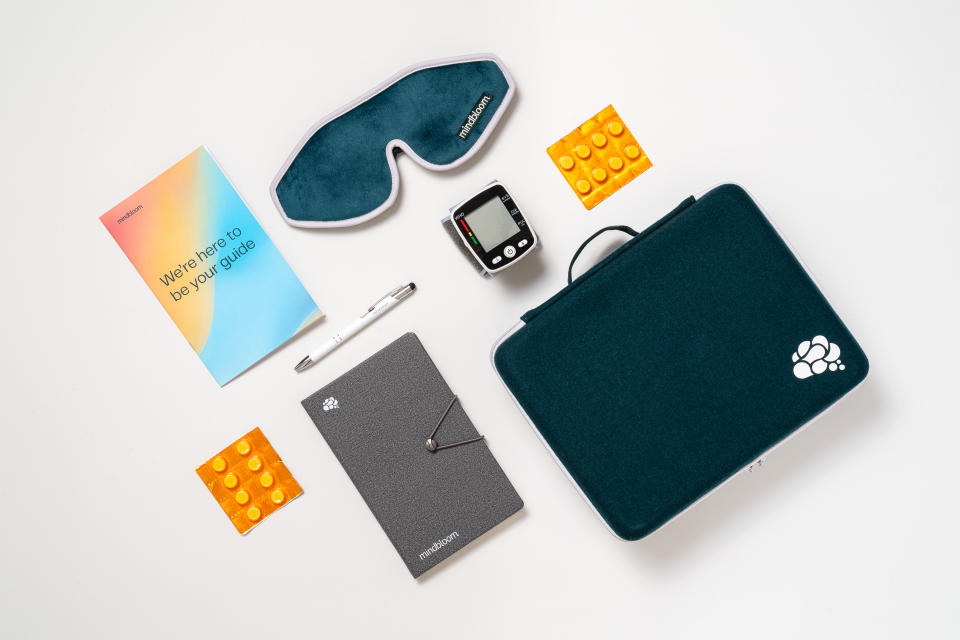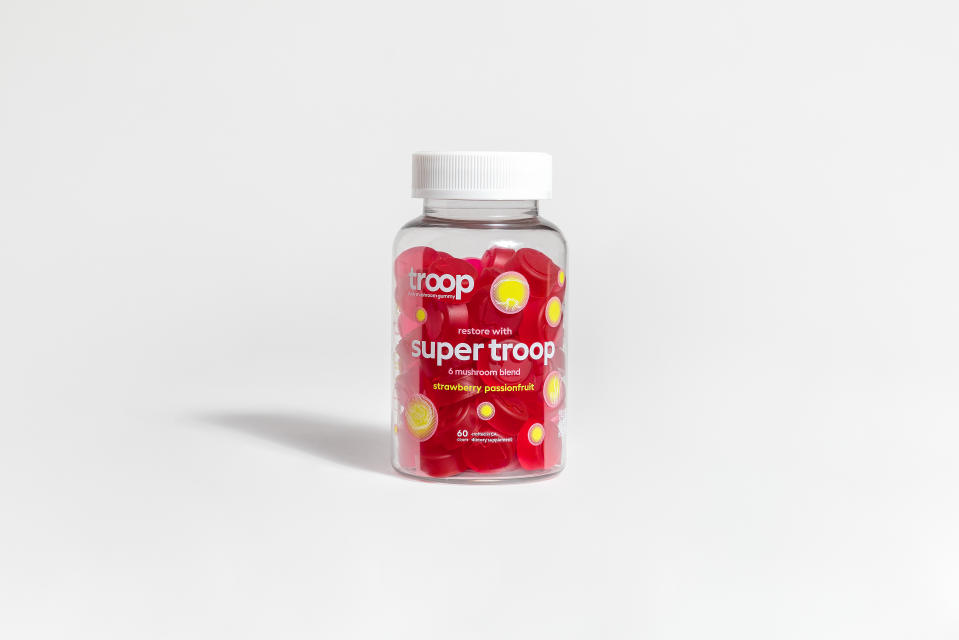How Psychedelics Will Impact Mainstream Product Development

Psychedelic-assisted therapy is revolutionizing mental health, helping patients heal from depression, anxiety, PTSD, and even eating disorders and quitting smoking. So how does that trickle down to mainstream beauty and wellness product development?
In 2020, Oregon passed Measure 109, allowing adults 21 and over to use psilocybin mushrooms in supervised and licensed therapy sessions. Analysts predict it won’t be long before other states follow suit. Already, both psychedelic-assisted therapy with psychedelics like psilocybin, ketamine and MDMA, and microdosing, ingesting trace amounts of psilocybin, are being embraced by universities, wellness centers and venture funds with interest especially high among Gen Z and Millennials.
More from WWD
“The idea of microdosing has become well-known among Gen Z and Millennials and, in many ways, is already accepted by these generations even if laws haven’t caught up,” said MaryLeigh Bliss, chief content officer at YPulse. She added that 68 percent of young people have heard of microdosing and 52 percent say that they’re interested in trying microdosing like LSD or magic mushrooms if it helps their mental health or overall wellness.
In the last couple of years, health centers like Field Trip, Mindbloom and a slew of others have popped up, where therapists utilize psychedelics as a catalyst for self-discovery and healing.
According to Field Trip, which has an array of locations across the U.S., Canada and Europe, their clients go from severe depression to mild depression and from severe anxiety to mild anxiety, following a treatment program, usually four or so ketamine-assisted therapy sessions. “Psychedelics tend to be rapid-onset antidepressants,” said Ronan Levy, executive chairman of Field Trip. “Within about 45 minutes of administration, people feel better because there’s a large serotonin release. They often report going back and revisiting or re-experiencing past traumas and get to look at them from a new lens, with a degree of objectivity.”

Levy said that ketamine, psilocybin and most of the classic psychedelics create “neuroplasticity.”
“So your brain starts growing new neural synapses,” he said. “During that window, usually for about a week or two after a psychedelic experience, people are able to adopt new habits, new perspectives and new outlooks.”
Levy added that the next generation of psychedelic-assisted therapies will evolve via technology as more people are looking at ways the body responds to certain types of music and sounds and how they can be used to enhance a psychedelic experience or even induce a psychedelic experience without any drugs.
While he doesn’t envision psychedelics to be sitting on the shelves at Sephora, Levy believes the evolution of psychedelics will look similar to Planet 13 in Las Vegas. “It’s the world’s largest cannabis dispensary with a restaurant. I foresee a world where there will be psychedelic spas that will have training and licensing requirements. It would be like a cannabis dispensary. Not in terms of physical layout, but with certain safety and security protocols in place.”
Mindbloom, which is based in New York, facilitates at-home ketamine therapy via telemedicine. The platform has more than 200 providers and treatments cost $110 to $190 per session. “Much of the psychedelic medicine market is focused on developing new compounds and bringing psychedelic medicines to market,” said Dylan Beynon, founder and chief executive officer of Mindbloom. “For example, the Multidisciplinary Association for Psychedelic Studies, or MAPS, is in phase three trials of MDMA for the treatment of PTSD — the final phase of research required for FDA approval. As more of these medicines are approved in the next decade, patients will benefit from a broader array of treatments available to suit their particular needs.”

Wini Lao
Venture capital is being poured into psychedelic treatments and funds are being built to support the burgeoning category. “In terms of beauty or consumer products, this is a very exciting time because the possibilities are literally endless,” said Jennifer Pereira, founder of The Bloom Fund. “The minute that female innovators grasp the market potential, we’re going to start to see a lot more. Microdosing is probably the next big medicinal revolution of our generation. Can you microdose and still be fully sober? The answer is yes and no. This is where it goes beyond legality. It comes down to user safety. And we don’t have a way of ensuring that the consumer can stay safe even at trace amounts because each person’s chemistry is so individual.”
Pereira noted that she would love to see a fungi face cream infused with psilocybin that is easily absorbed and could be healing from the inside out. “I’d like to see a dispensary model like cannabis so that there is regulation and control and more care and intention with distribution,” she added. “The ultimate and best would be a wellness center with specific protocols.”
Similarly, Delphi, a fund with a vision to invest in founders who are changing the face of regenerative farming and holistic health, is raising $50 million to fund companies, both in developing new therapies, care delivery and how medicine gets to people.
“If you asked us 12 months ago what the future of consumer or recreational psychedelics would be, we would’ve said, that’s easily five years away before we can even have a conversation about access to microdose, macrodose products or general access to psychedelics,” said Pip Deely, general partner at Delphi VC, whose cofounder is Kalika Farmer. “We’re interested to see how new products come onto market in places that are decriminalized because when there’s decriminalization it opens the market to grow and experiment. It’s still pretty murky about how commercial ventures are going to be handled.”
That’s beginning to change, though, Deely said. “But in the gray market, we’ve seen an amazing explosion of new product development. People are using regulatory loopholes to bring products to market using Instagram and social media to reach an audience directly,” Deely noted. “The product innovation here is enormous and it owes a lot to what we’ve seen in cannabis.”
To that end, Canadian microdose brand, Kind Stranger, is able to ship within Canada, given that market is a bit gray. Additionally, functional mushroom brands that use non-psychoactive mushrooms like chaga and reishi, among others, are excited about the future of psychedelics and are keen to explore the category when it becomes legal.
SuperMush, a functional mushroom brand that sells daily mouth sprays for immunity, energy and mood, just formed the paperwork to start a nonprofit focused on psilocybin and microdosing in hopes of having an impact on public policy. “We hope to reframe a lot of the microdosing supplements out there as wellness supplements,” said Alli Schaper, cofounder of SuperMush. “Right now how public policy is being shaped, a lot of people think that psychedelics are going to become legalized for consumer use. That’s not the path. It’s only macrodoses at service centers. So we’re starting this microdosing collective to raise awareness and education specifically around microdosing.”

Another brand interested in psychedelics is Troop, a gummy wellness brand blended with six different functional mushrooms, including lion’s mane, reishi, chaga, cordyceps and turkey tail. “A huge theme of Troop is demystifying mushrooms,” said cofounder Jake Mellman. “We want to make mushrooms approachable as a whole. When we say we have a mushroom gummy, consumers automatically ask us, are we going to trip? We want to show people that these mushrooms are not evil and that you can approach mushrooms in a fun and friendly way. We believe that will also lead to curiosity and more understanding of the psychedelic side as well.”

YPulse’s data shows that Gen Z and Millennials would be interested in products infused with microdoses of psychedelics. In fact, 36 percent said they would be interested in gummies or candy with a tiny amount of a psychedelic drug as an ingredient, nearly the same number who say they’re interested in CBD gummies.
Jamaica is a hot spot for consumers to flock to try psychedelics and several universities like the University of the West Indies and the University of Technology are getting involved with clinical trials and the development of products. “Jamaica is ahead of the game in that the government has taken the position of supporting the development of products and making it legal,” said Terri Smith, CEO of Wake Network. “You can participate in everything from digesting wet mushrooms to dried mushrooms in capsules to making products or putting it in food. As long as you’ve done all the registrations, you don’t have to hide it.”
Smith added that there are a lot of people looking at different ways of blending psilocybin mushrooms and psychedelics with other types of medicinal mushrooms. She even noted that face masks are underway. “There is a very important role in the psilocybin industry for women,” Smith said. “As women, we need to make sure that we stake our place in this new industry. It’s not easy when you are a woman of color or a young woman because, as usual, the dominant players are the guys that are coming with cannabis startup money.”
Meanwhile, it’s estimated that the U.S. spends about $250 billion a year on mental health treatments and ancillary services. “The impact of what we’re seeing right now with psychedelics is significant,” added Levy. “The psychedelic renaissance that we’re experiencing right now is going to be the most impactful social and cultural force of the next 30 to 50 years.”
Sign up for WWD's Newsletter. For the latest news, follow us on Twitter, Facebook, and Instagram.

